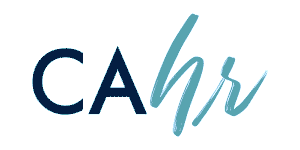Harnessing the Power of Data
Leverage Data to Drive Employee Engagement with Healthcare and Benefits – And Ultimately Achieve a Healthier Population
The upcoming Virtual California HR Conference on May 25-27, 2021, is pleased to announce Heather Hagg, PhD, VP of Analytics and Operations for Castlight Health, will be providing an in-depth view into predictive analytics. With executive experience in the private sector, federal government, and startup healthcare organizations, Heather has co-authored over 30 papers in refereed journals and conference proceedings in the areas of integrated health, health services research, implementation science, and health system improvement.
CAHR21: How does predictive analytics work, and how can it be used in the healthcare industry?
HEATHER: Predictive analytics leverages historical data to predict the probability of future outcomes and trends. This multidisciplinary approach employs techniques such as regression, machine learning, artificial intelligence, decision trees, and forecasting to create predictive models.
It’s important to note that models are meant to be helpful, but they aren’t perfect. They can only replicate a piece of reality. Each model is bounded by underlying assumptions. It’s crucial to know what the specific assumptions are for each model because this changes the way the model can be applied to predict future outcomes.
For example, a simple regression model may tell us that people who live at or below a certain latitude may have an increased risk of skin cancer. Using zip codes and this model, we can train a personalization engine to send sun safety messages to those who live in certain geographical zones. Remember, though: We must pay attention to the model’s underlying assumptions. If this model was created and validated for people under the age of 65, for instance, it can only be applied to predict outcomes for people within that age group.
CAHR21: How can predictive analytics help employees get more out of their health benefits?
HEATHER: Healthcare and benefits can be challenging and confusing, and people often need help navigating it. This is especially true because healthcare is so unique to the individual. Each person may need different programs, support, and communication channels at different times. It is very time-consuming and resource-intensive for humans to provide personalized recommendations for millions of employees. That’s where predictive analytics can help.
We can use diverse clinical, wellbeing, search activity, and social determinants of health data sets, then feed these data into predictive analytics models. Once trained well, the models can use the data to predict what information will be relevant for individual users and make personalized recommendations for programs and care based on these predictions.
The more granular the data we feed into the model, the more likely the output is relevant to the end user. By providing highly personalized, relevant recommendations, we’re much more likely to engage people in using their benefits and accessing the right care at the right moment in time.
CAHR21: How can we leverage predictive analytics to inform strategic decision making for future program design?
HEATHER: Predictive analytics can sort individuals into different subcategories based on their health priorities. For example, at Castlight our personalization engine consists of predictive analytics models for over 200 different clinical and wellbeing segments.
The presence and size of various segments can inform future benefit program recommendations and engagement strategy. For example, if an employer finds they have a large population within behavioral health segments, they may want to consider adding more behavioral health support for employees. Or, if an employer is already providing a robust portfolio of behavioral health tools but seeing low interaction with these resources, they can implement changes to improve engagement like offering incentives or targeting outreach to employees with an ongoing or predicted future behavioral health concern (as determined through the personalization engine).
Ultimately, using predictive analytics can have a significant impact on people’s day-to-day lives and health status. By serving people healthcare and benefits through tools like Castlight that leverage predictive analytics to personalize recommendations for programs and care, we see greater engagement with health benefits, more cost savings, and better health outcomes.
Want to hear more about the ultimate HR experience? Visit https://cahrconference.org/.

